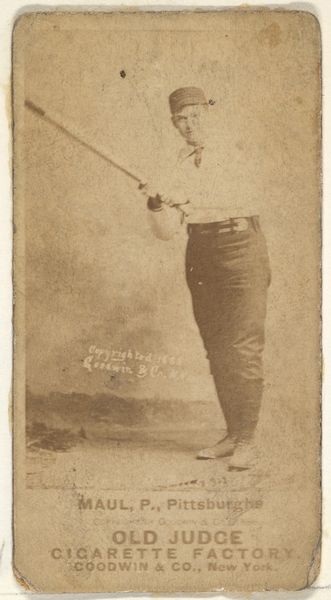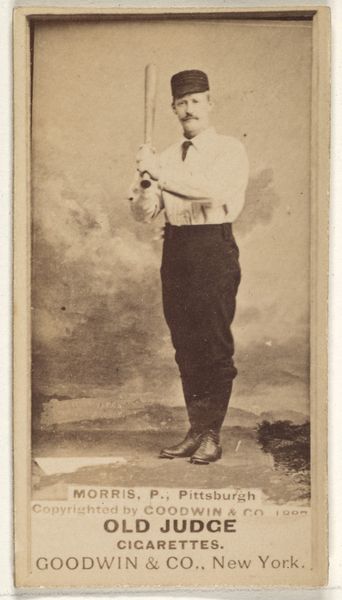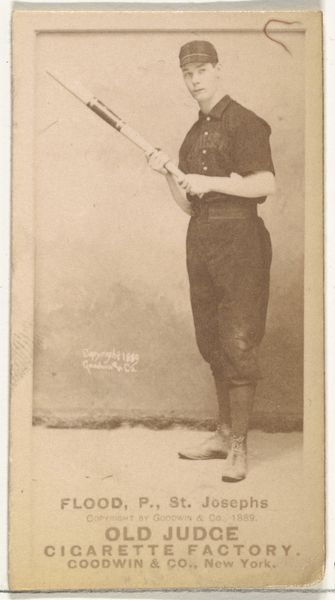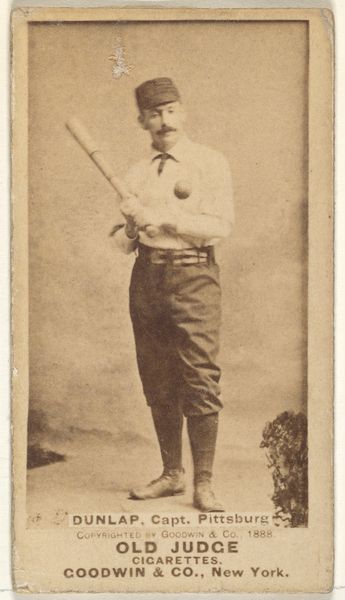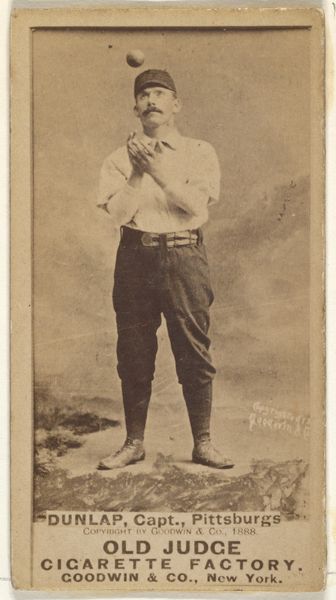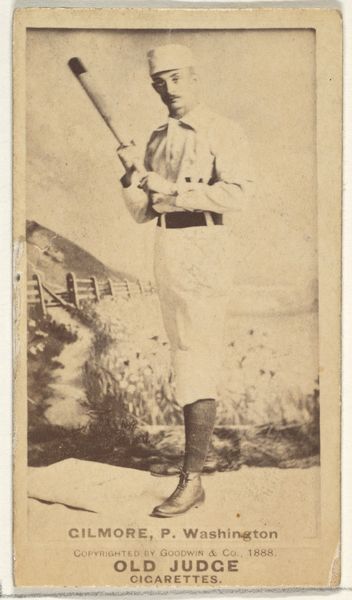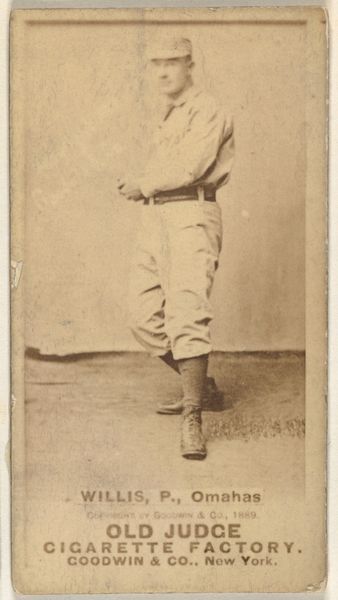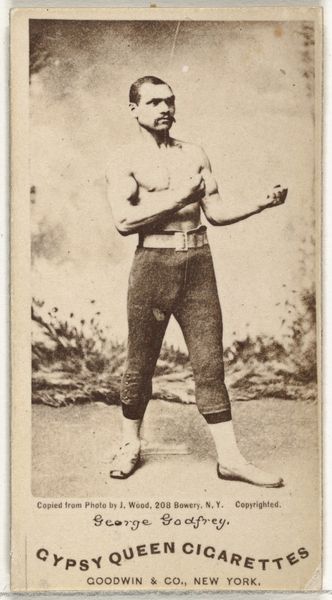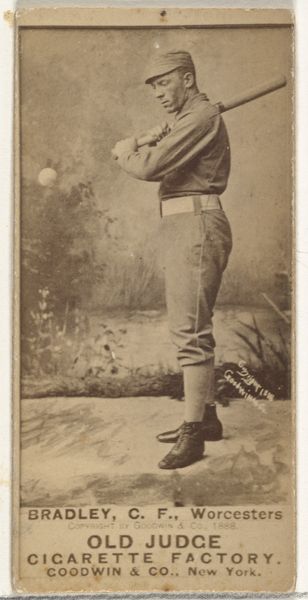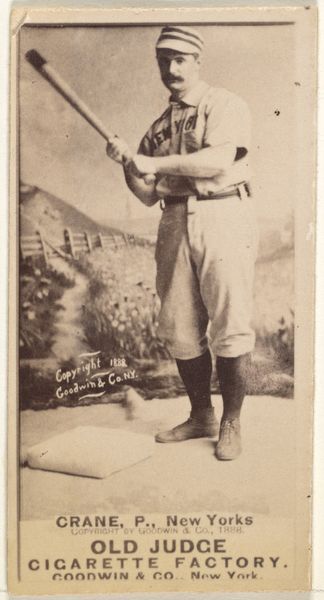
Al Maul, Pitcher, Pittsburgh, from the Old Judge series (N172) for Old Judge Cigarettes 1888
0:00
0:00
drawing, print, photography
#
portrait
#
drawing
# print
#
photography
#
coloured pencil
#
genre-painting
Dimensions: sheet: 2 11/16 x 1 3/8 in. (6.9 x 3.5 cm)
Copyright: Public Domain
Curator: Here we have a rather unique piece: an 1888 baseball card from the Old Judge Cigarette series, featuring Al Maul, a pitcher for Pittsburgh. It's a print based on photography. Editor: Immediately striking is its sepia tone – so nostalgic. It evokes a bygone era, a simpler time, almost…mythic. And that texture, you can almost feel the aged paper. Curator: These cards were inserted into cigarette packs as a marketing tactic. Think of the socio-economic implications – baseball's burgeoning popularity intersecting with the rise of mass-produced tobacco. Goodwin & Company, the producers, were capitalizing on both trends. The card speaks volumes about the commodification of leisure. Editor: Indeed. But look closer at Maul himself. His stance, the way he grips the bat – it projects an earnestness, a certain vulnerability. He's caught between the heroic ideal and the commercial machine. His uniform, those thick stockings – symbols of the working class translated into athletic attire. It blends themes of aspiration and labor. Curator: And the "Old Judge" branding is integral. The brand name alone tries to conjure notions of experience and authority. In essence, associating the cigarettes with integrity...rather ironic when viewed through today's health perspectives. Editor: Irony abounds. Even the act of collecting these cards becomes a symbolic gesture. People collecting fragments of fleeting fame and success, perhaps attempting to embody aspects of these sporting heroes? Maul is literally consumed, folded into consumer culture through this token, to be kept, traded, then often discarded after cigarettes. Curator: The card, therefore, functions as more than just a portrait of an athlete or piece of advertising. It becomes an artifact representing the societal values and cultural priorities of late 19th-century America. It also signals a marked change from local community culture to an emerging culture of celebrity. Editor: I appreciate how its visual symbolism, through sepia hues, the ball player and associated text, evokes these deeply human anxieties around commerce, progress, and permanence. It goes beyond simple baseball and capitalism and into complex issues. Curator: Seeing it framed here, its preservation grants it a continued presence, something Al Maul himself probably never imagined when striking that pose in a studio so long ago.
Comments
No comments
Be the first to comment and join the conversation on the ultimate creative platform.
